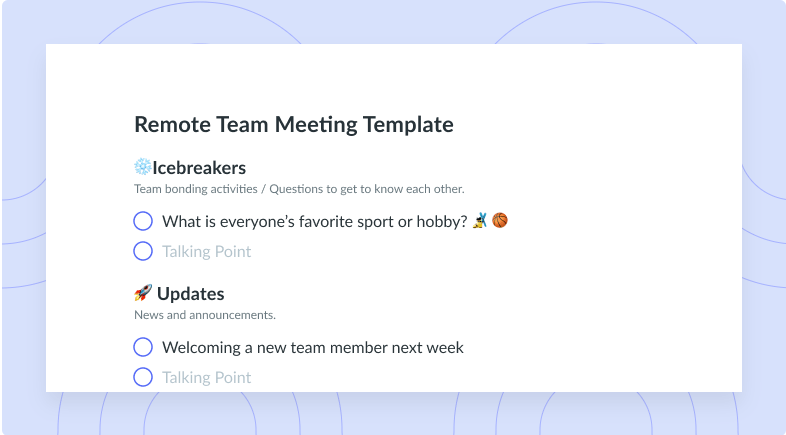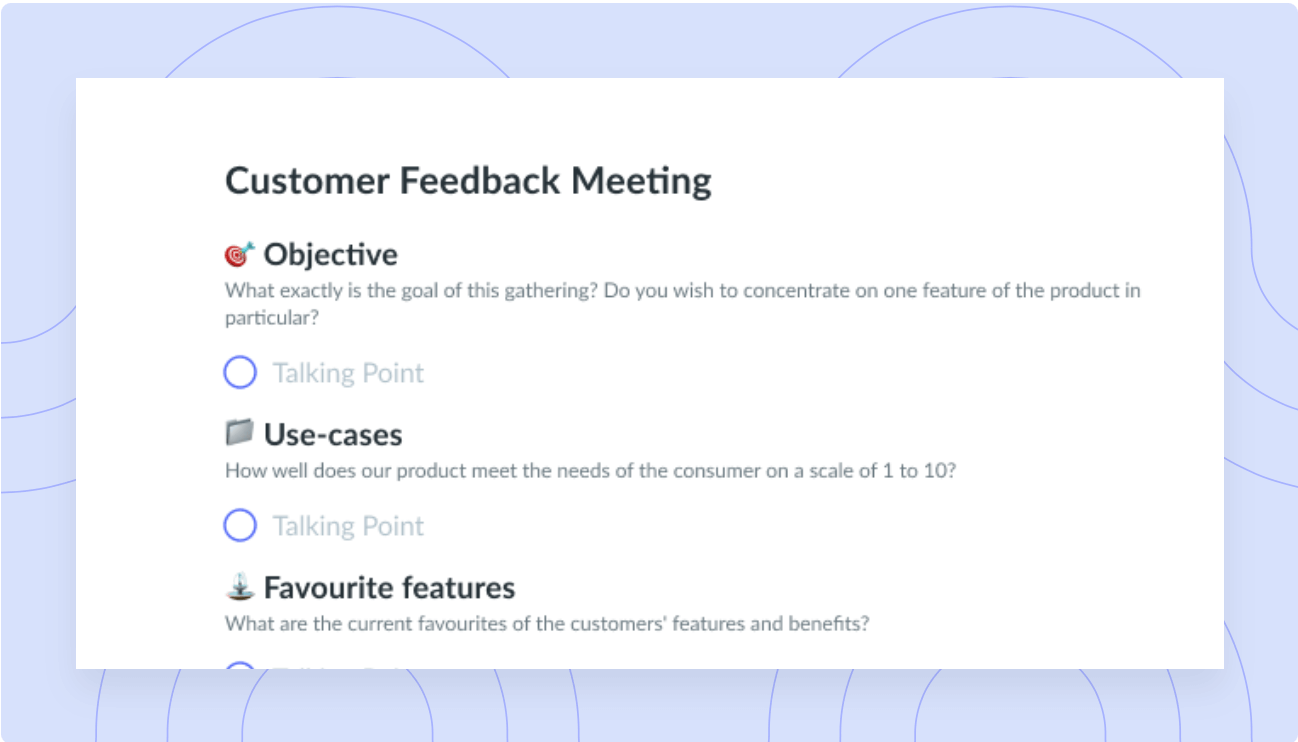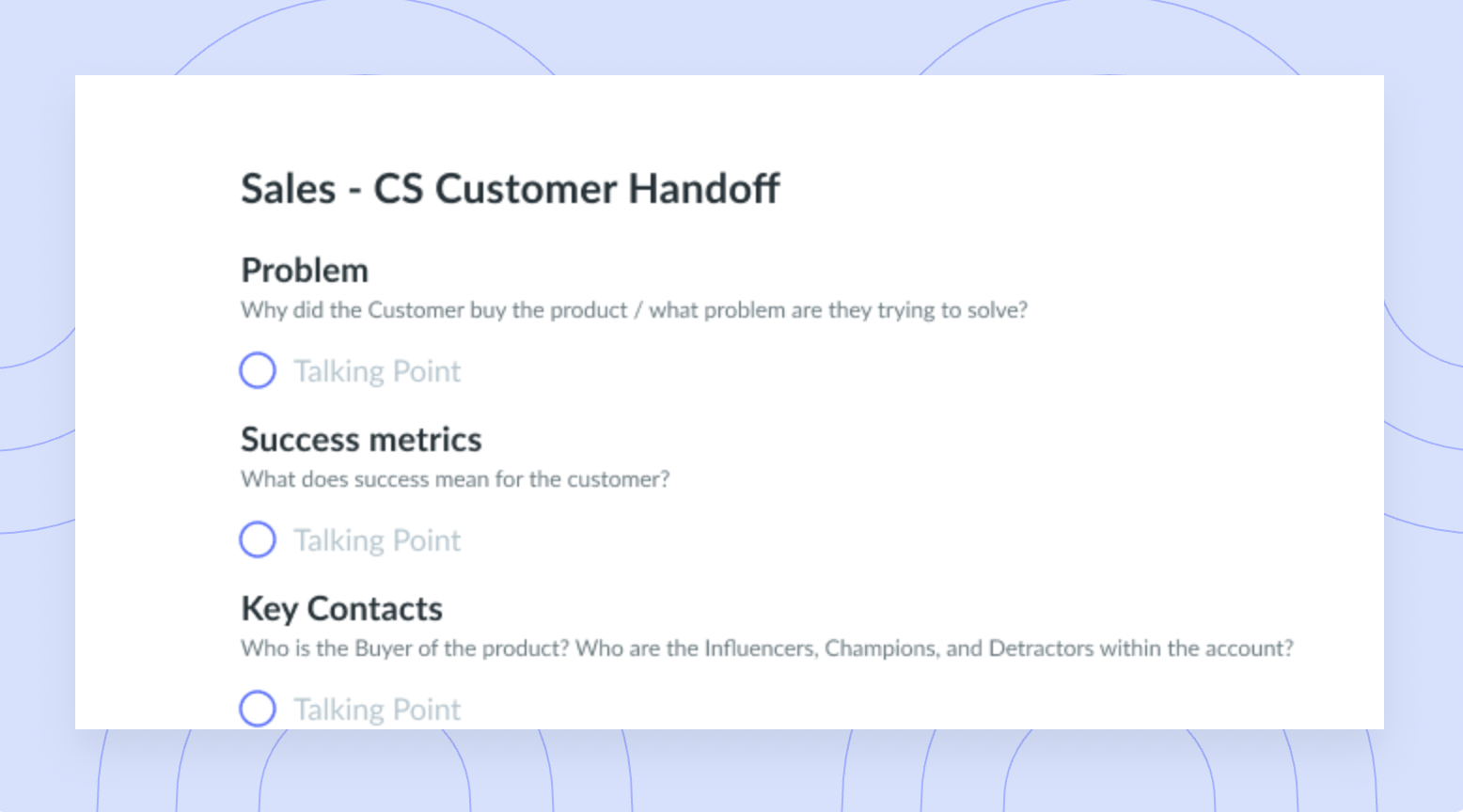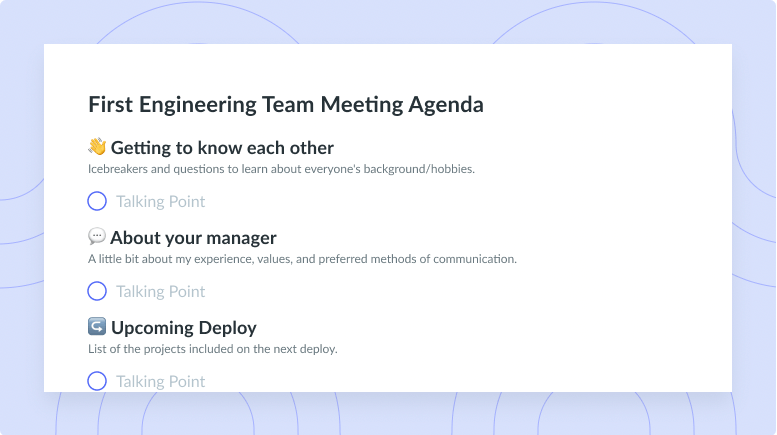Best Practices for Leading Distributed Engineering Teams
Achieving success when leading distributed engineering teams is possible! Follow these tips to ensure your remote team is on the right path.
A distributed engineering team will likely provide much-needed flexibility for companies of all shapes and sizes, but only if managers know how to lead this type of team to success.
Thankfully, leading a distributed engineering team is easier than you think! As you lead your team, keep these best practices in mind to ensure everyone feels supported and works at the most efficient level for them.
- Benefits of having a distributed engineering team
- 10 best practices for leading distributed engineers
Benefits of having a distributed engineering team
Are you thinking about having a distributed engineering team? Leading this type of team can have several benefits for your organization. Some benefits include:
- Bigger talent pool: Why limit your hiring search to just one city? When you have a distributed engineering team, you have a bigger talent pool to choose from, making it easier for your company’s hiring team or recruiters to find the perfect fit for open roles on your team. Instead of only considering engineers in your area, your team can hire engineers in an entirely different city, state, or even country—essentially, as long as they’re suited for the role, they can join your team!
- Cost savings: When your team works remotely, you’ll be able to reduce your business’ operational costs. You don’t have to pay for an office or have any of the office maintenance costs that come with it. Instead of paying things like the electric bill or stocking the kitchen with snacks, you can save this money and use it to reward your team for a job well done.
- Opportunity for project coverage: Having a remote team likely means you have members working in different time zones, and when your team is working on a new project or one with a fast-approaching deadline, this distribution will give your team more project coverage. Plus, if a challenge arises while half the team is outside of typical working hours, you can rest assured that team collaboration is still happening in other time zones.
- Work flexibility: Both in time and place, remote work brings a ton more flexibility to the table. Distributed engineering team members can start and end their work days as they choose, as long as their work is complete and contributes to team goals. Giving employees this flexibility can lead to a stronger work-life balance and help workers avoid burnout. Additionally, employees can work from home—or anywhere else they have in mind—when completing their tasks.

Managing a distributed engineering team?
Take control of your engineering team meetings by having collaborative meeting notes and encouraging accountability with action items. Try a tool like Fellow!

10 best practices for leading distributed engineers
Looking to find success while leading your distributed engineers? Follow these 10 best practices to ensure productivity and collaboration are at an all-time high.
- Build a strong culture
- Create psychological safety
- Have a communication guideline
- Define meeting rules
- Fight against burnout
- Encourage knowledge sharing
- Stay agile
- Repeat the company mission often
- Adapt asynchronous work
- Choose a good tech stack
1Build a strong culture
The first best practice to keep in mind when leading a remote team of engineers is to focus on building a solid culture. Team culture is important for many developers, and this component should be especially strong for team members who aren’t sharing office space.
To build strong remote culture, it’s essential to create a sense of community within the team and schedule time for social interactions to help foster strong working relationships.
Lena Reinhard, Leadership Coach and Consultant, emphasized this point on our episode 129 of our Supermanagers podcast, sharing,
“I think, especially in high growth, too many companies still underestimate the impact of culture. Cultures always are looked at as this sort of soft thing that you don’t really have to care about if you’re a real leader. But culture is usually the biggest factor in the question whether teams are effective or not.”
2Create psychological safety
Next, consider how you can create a space for psychological safety to ensure your team members feel safe to communicate honestly and behave genuinely without fearing their words or actions being used against them.
Your remote employees shouldn’t be afraid of consequences for simply being themselves and being true to who they are. When they have new ideas, they should feel empowered to bring them to the table. The same applies to when failures occur and feedback is given.
Fostering this kind of safe space is crucial for remote teams—and especially engineering teams.
3Have a communication guideline
One aspect of remote work to note is that communication can be challenging—but only if you let it. A communication guideline can be handy when working to achieve common project goals, establishing expectations, and determining who is working on what.
From problem-solving meetings to brainstorming sessions, team standups, and one-on-one meetings with managers, having communication guidelines ensures all team members are on the same page. These guidelines also help establish how certain types of feedback should be given and when things should be emailed versus sent in a direct message, for instance.
4Define meeting rules
For distributed teams, meetings serve several important purposes. And because of this, establishing meeting ground rules is imperative; these rules help ensure that meetings are productive, that everyone stays on topic, and that each meeting is a good use of everyone’s time.
Some meeting rules you can consider implementing are:
- Always come prepared
- Show up on time
- Stick to the agenda
- Record action items, decisions, and established deadlines
- Never interrupt others while they’re speaking
- Always assume positive intent
Another important meeting rule: always have an agenda. With Fellow, your team can take advantage of over 500 meeting agenda templates to ensure your team doesn’t have to start from scratch when building agendas. From agendas for agile meetings to sprint sessions, you’re bound to find a template that works for your remote team.

5Fight against burnout
In a perfect world, burnout could be avoided across industries, companies, and teams; unfortunately, this isn’t the case. Fighting against burnout is especially important for engineers working remotely, who may suffer from developer burnout. This type of burnout is when a programmer or software engineer suffers from feelings of exhaustion, increased mental distance, demotivation, and cynicism with their job, and therefore experiences reduced professional efficacy.
It’s not uncommon for developers to experience burnout after long weeks of coding or after programming for days on end, which can be hard on the brain. As a manager, if you notice your remote workers are more disengaged than usual, are having a hard time hitting their deadlines, or are seeing a decrease in the quality of their work, they may be burned out.
Schedule one-on-one meetings with each of your direct reports to check in on how you can help and what they need from you during this time.
6Encourage knowledge sharing
Another best practice to keep in mind is to encourage knowledge sharing. As a manager of remote engineers, you should talk to your team about how important it is to exchange knowledge with one another. For this, you can create knowledge wikis where engineers can easily create and edit content with one another. You can also host dedicated virtual meetings for your developers to discuss topics they care about most.
You never know what your team members can learn from one another!
7Stay agile
There is no one-size-fits-all approach to leading a successful distributed team, and what works now may need to be tweaked six months from now. It’s important to be ready to pivot your methods and strategies to stay flexible and responsive when things change.
You and your remote team need to be open to making changes, asking for feedback, and giving one another input on improving processes and procedures. The makeup of your team will change over time, and so will the projects on your plate and the tools you use to reach deadlines. Staging agile so your team can scale while remaining productive is crucial for distributed teams.
8Repeat the company mission often
Does your team know the company’s mission?
The answer to this should always be yes, as the mission should be discussed and repeated often. The company mission statement will focus on the values that make up the heart of your organization and detail the purpose or reason behind it. Repeating this mission emphasizes what your engineering team is doing daily to support this mission.
Repeating the mission can also help your team stay focused on the big picture and better understand how it’s supporting the company’s bottom line.
9Adapt asynchronous work
Another best practice to consider is to adapt asynchronous work. This type of communication will help your team work more efficiently while giving your remote workers flexibility to get their jobs done in the way that’s most beneficial to them.
Asynchronous communication lags from when a message is sent to when the individual on the receiving end interprets it, which is how most communication occurs amongst distributed teams.
From sending emails and direct messages to sharing instructional videos, having asynchronous work and communication methods is best for remote teams within various time zones.
With Fellow, you and your teammates can build great asynchronous meeting habits with collaborative agendas, real-time notetaking, and an array of time-saving templates.

10Choose a good tech stack
Software can make or break your remote team, so it’s crucial to have a tech stack with the best of the best. Plus, this helps fight tool fatigue, which is when your remote engineers are overwhelmed by the number of tools or apps they’re using to complete their work. This tool fatigue can lead to frustration, a loss of motivation, and generally feelings overwhelm.
Choose the tools in your tech stack wisely and keep things as simple as possible. Plus, this will save your company money in the long run!
Remote work is here to stay
Your approach to leading a remote team of engineers is only as successful as you make it. So follow these 10 best practices, tactics, and strategies when supporting your distributed engineers in a remote setting.




![On-Call Engineering Best Practices [+ Pros & Cons]](https://fellow.app/wp-content/uploads/2022/09/On-Call-Engineering-Best-Practice.jpg)























